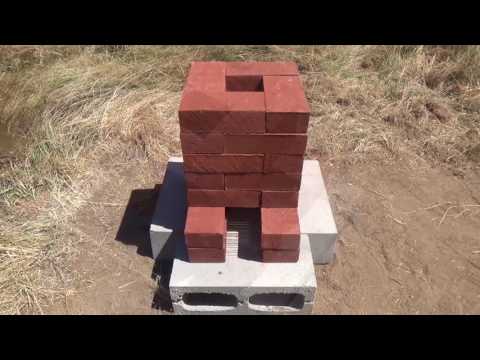So those are coat-hanger wires around a 45 degree mitered clay pipe, you could put new rocks in wherever you stopped for a while so it'd be very light. I haven't built one of these yet but they're supposed to put out an enormous amount of heat for just a few twigs, and heat adjustment is just a matter of pulling twigs out/pushing in. The brick ones are best made with ceramic kiln bricks ('they' say) and these blocks don't get as hot and they're very lightweight to carry around. One could just carry the light kiln bricks around and set up as needed. You can find enough fuel in twigs almost anywhere to cook with. I think the concept comes from backyard smelters, so with some bellows action this could get extremely hot.








